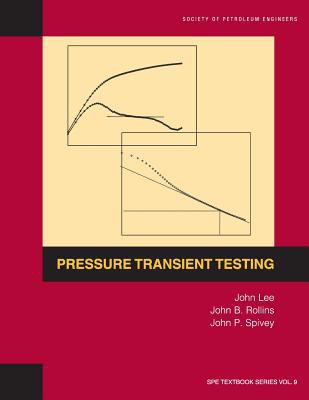
Pressure Transient Testing
by John Lee, John B. Rollins, John P. Spivey
ISBN-10: 1555630995
ISBN-13: 9781555630997
$280.00
Book Specs
Trade Cloth
Society of Petroleum Engineers
Published on
Jan 1, 2003
Edition
st Edition
Dimensions
8.50x0.77x11.00 Inches
Weight
1.89 Pounds
About the Book
Pressure Transient Testing presents the fundamentals of pressure-transient test analysis and design in clear, simple language and explains the theoretical bases of commercial well-test-analysis software. Test-analysis techniques are illustrated with complete and clearly written examples. Additional exercises for classroom or individual practice are provided. With its focus on physical processes and mathematical interpretation, this book appeals to all levels of engineers who want to understand how modern approaches work. Pressure transient test analysis is a mature technology in petroleum engineering; even so, it continues to evolve. Because of the developments in this technology since the last SPE textbook devoted to transient testing was published, we concluded that students could benefit from a textbook approach to the subject that includes a representative sampling of the more important fundamentals and applications. We deliberately distinguish between a textbook approach, which stresses understanding through numerous examples and exercises dealing with selected fundamentals and applications, and a monograph approach, which attempts to summarize the state-of-the-art in the technology. Computational methods that transient test analysts use have gone through a revolution since most existing texts on the subject were written. Most calculations are now done with commercial software or by spreadsheets or proprietary software developed by users to meet personal needs and objectives. These advances in software have greatly increased productivity in this technology, but they also have contributed to a "black box" approach to test analysis. In this text, we attempt to explain what's in the box, and we do not include a number of the modern tools that enhance individual engineer productivity. We hope, instead, to provide understanding so that the student can use the commercial software with greater appreciation and so that the student can read monographs and papers on transient testing with greater appreciation for the context of the subject. Accordingly, this text is but an introduction to the vast field of pressure transient test analysis.
